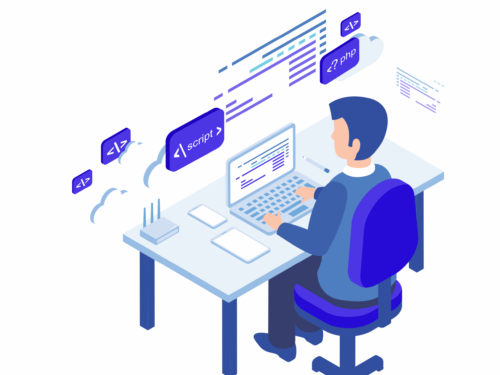Giriş
In the dynamic realm of web development, two fundamental disciplines work in harmony to bring websites and web applications to life: front-end development and back-end development. While often misunderstood as interchangeable terms, they represent distinct yet complementary phases of the development process.
Front-End Development: The User Interface Maestro
Front-end development takes center stage, crafting the visual elements and interactive experiences that users directly engage with. It’s the art of transforming ideas into captivating interfaces that captivate users and guide them through their digital journey.
Responsibilities of a Front-End Developer:
HTML: The foundation of web pages, defining content and structure.
CSS: Controls the visual presentation, including colors, fonts, and layouts.
JavaScript: Adds interactivity, animations, and dynamic behavior.
JavaScript Frameworks: Utilize frameworks like React, Angular, or Vue.js to build complex user interfaces.
Cavab verən dizayn: Ensure websites adapt seamlessly to different screen sizes and devices.
Essential Skills for Front-End Developers:
Creativity and User Experience (UX) Focus: Understand user needs and translate them into intuitive interfaces.
Proficiency in HTML, CSS, and JavaScript: Master the core building blocks of web pages and user interactions.
JavaScript Framework Expertise: Learn at least one popular JavaScript framework for building complex UIs.
Responsive Design Principles: Understand how to create websites that adapt to various screen sizes.
Back-End Development: The Powerhouse Behind the Scenes
Back-end development delves into the server-side machinery, handling data storage, user authentication, and communication with databases. It’s the backbone that powers the website’s functionality, ensuring seamless data management and secure operations.
Responsibilities of a Back-End Developer:
Choose a Programming Language: Select a suitable language like Python, Java, PHP, or Node.js for server-side development.
Design and Implement APIs: Create Application Programming Interfaces (APIs) to enable communication between the front-end and back-end.
Database Management: Store, retrieve, and manipulate data using databases like MySQL, PostgreSQL, or MongoDB.
Security Implementation: Implement security measures to protect user data and prevent unauthorized access.
Server Administration: Manage servers, ensuring uptime, performance, and scalability.
Essential Skills for Back-End Developers:
Problem-Solving and Analytical Thinking: Break down complex problems and design efficient solutions.
Proficiency in a Back-End Programming Language: Master at least one server-side programming language.
Database Management Skills: Understand database concepts, data modeling, and SQL queries.
Security Awareness: Stay updated on security threats and implement effective protection measures.
Server Administration Expertise: Manage servers, optimize performance, and ensure scalability.
Full-Stack Development: The Fusion of Front-End and Back-End Expertise
Full-stack developers possess the rare ability to bridge the front-end and back-end divide, wielding expertise in both domains. They can seamlessly navigate the entire development process, from crafting user interfaces to building robust server-side systems.
Skills Required for Full-Stack Development:
Mastery of Front-End and Back-End Technologies: Proficient in both front-end languages (HTML, CSS, JavaScript) and back-end languages (Python, Java, PHP, Node.js).
Full-Stack Frameworks: Expertise in frameworks like Ruby on Rails or Django that cater to both front-end and back-end development.
System Design and Architecture: Understand how to design and implement scalable and maintainable web applications.







